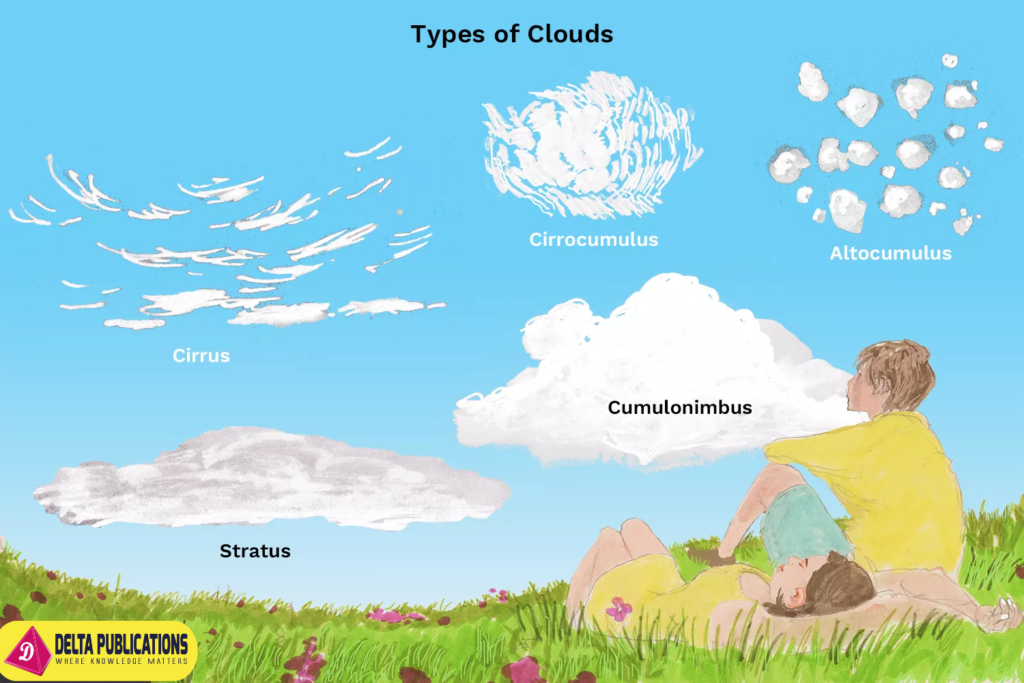What Causes Clouds And Rain
key notes :
Water Cycle

- Evaporation: The sun heats up water from oceans, lakes, and rivers, turning it into water vapor (gas) that rises into the air.
- Condensation: As the water vapor rises, it cools down and changes back into tiny water droplets, forming clouds.
- Precipitation: When the droplets in clouds get too heavy, they fall back to the Earth as rain, snow, or hail.
Cloud Formation

- Clouds are made up of tiny water droplets or ice crystals that are so small they float in the air.
- These droplets come together to form different types of clouds, such as cumulus (fluffy clouds) and stratus (layered clouds).
Types of Clouds

- Cumulus Clouds: These are big, puffy clouds that usually bring fair weather.
- Stratus Clouds: These are low, gray clouds that cover the sky and often bring rain.
- Nimbostratus Clouds: Thick clouds that bring steady, heavy rain or snow.
- Cumulonimbus Clouds: Tall, towering clouds that bring thunderstorms.
Why Does It Rain?
- Rain happens when the air in the clouds can’t hold the water droplets anymore, so they fall to the ground as precipitation.
- Cold Fronts: When a cold air mass meets a warm air mass, the warm air rises, causing condensation and rain.
- Warm Fronts: When warm air rises over cooler air, it can also cause rain.
Important Factors
- Temperature: The temperature of the air affects how much moisture it can hold.
- Air Pressure: High and low pressure areas can affect cloud formation and weather patterns.
- Humidity: When the air is very humid, clouds form more easily and may lead to rain.
Let’s practice!

